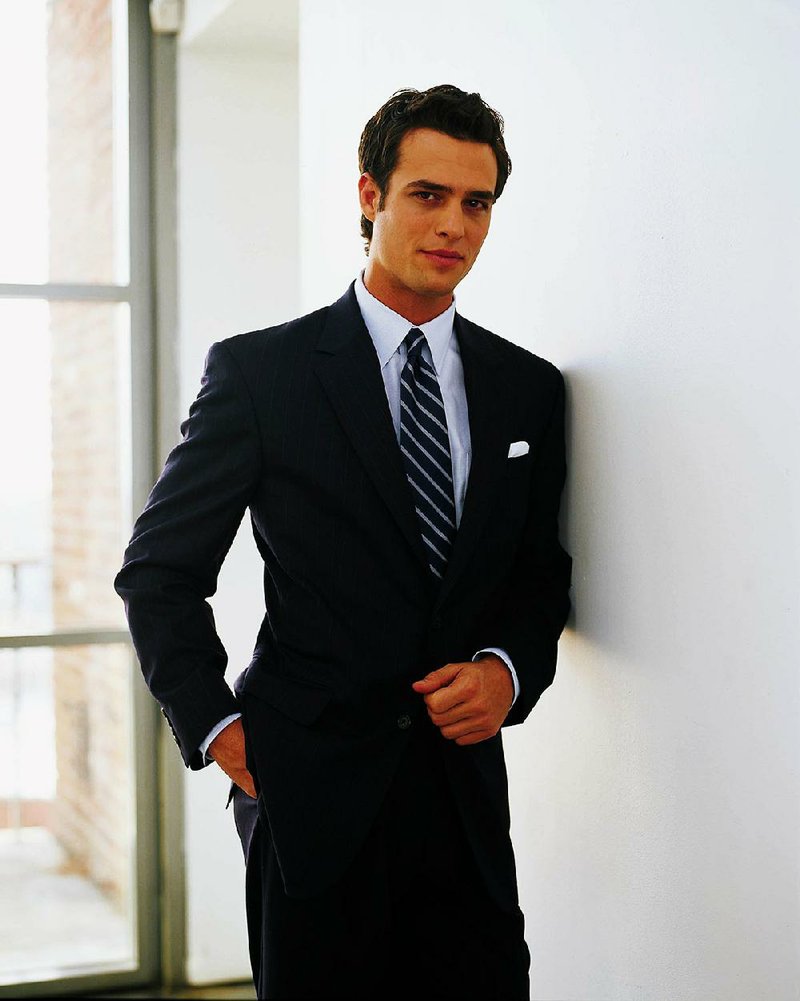Q. At my office, we still wear suits. Not all the time, but often enough that I need more than the two I have. And I think in my late 20s I should start looking at the positions I want to move up to. Beyond my one blue and one gray, what should I buy? If you can keep it under $1,000, that'd be good.
A. You are wise to recognize that we send nonverbal messages about who we are and where we are headed by what we wear. We'd like to believe that the world judges us solely on our actions, but that is just not realistic. Who among us is not swayed to some extent (or to a great extent) by what we see? When you want to be noticed as someone on his way up, dressing the part helps.
A core wardrobe is the right place to start. Everyone's core wardrobe is a little different (especially as to price, degree of formality, and where we are on the business ladder), but many of the basics are the same.
Several years back, when I wrote my book, Dress for Excellence, a man's business wardrobe was much more formal. The emphasis was on dressier clothes; most men wore suits. While today's suit-wearing offices are fewer, that does not mean that suits are not an important part of a man's wardrobe. A suit makes a statement about your level of professionalism, about your level of success, and about how much respect you have for the specific occasion.
Men still wear a suit, shirt and tie for all manner of important events: when a coach is seen courtside, when a professional athlete travels with his team, when a man attends an important meeting, at a wedding, at a funeral, when lawyers (and their clients) appear in court. The question is not, Do I need to wear a suit? but rather, which are the suits that should make up a man's minimum (core) wardrobe?
Whether you are starting out at entry level or are looking to move up in your field, the suits in your closet should be selected in their order of importance. You would do well to follow this proven formula. It's one I use with many of my clients.
• First suit: A single-breasted solid dark blue. Everyone looks great in dark blue. A dark blue suit is the first choice of movers and shakers of commerce; leaf through the pages of Time, Fortune, and a pile of annual reports for confirmation.
• Second suit: Dark gray, again, single-breasted.
• Third suit: Medium gray or medium blue with a bit of a pattern, such as a faint shadow stripe or a very subtle glen plaid, is a good choice. Before you say you would never wear a plaid suit, be sure you know exactly what a glen plaid is. A true glen plaid is a quiet pattern. In Europe fine tailors call the pattern Prince des Galles. Select one in subtle, muted colors; avoid any that are strident or demand attention.
• Fourth suit: Several years ago, I used to recommend that one of your core suits should be a navy pinstripe. This is no longer the case. Dressing today has changed so much that a navy stripe is far too formal for most situations. Later on, when your wardrobe and your pocketbook expand, you might, if you like, add one of these; but for now, skip the navy stripe. Another reason for waiting a bit to buy a navy pinstripe is that, of all the suits in your wardrobe, this one absolutely must be a good one. When it is anything less than fine, it looks tacky. Wait until you can afford a really good one ... and until you have enough dressy occasions to justify the purchase.
So, what should that fourth suit be? I suggest a lighter color, such as a tan or khaki suit in lightweight wool gabardine or cotton poplin. The tan/khaki suit introduces a welcome third color palette.
Although it's not precisely a suit, an essential part of your core wardrobe is the combination of a navy blazer and medium gray or khaki trousers. (If you can afford it, a pair of each.) In addition to a blue blazer, I recommend you buy a great looking sport coat in a smart tweed or a windowpane plaid. The same pants that go with your blazer will work with the sports jacket.
These items are versatile, flattering, and practically a necessity. Don't concern yourself if you can't afford to buy them all at once. You don't need to buy everything now. Begin with one or two quality suits that fit you perfectly and a blazer; then add one more item at a time. With a few interchangeable shirts and ties, you will multiply your options and end up with dozens of different looks. You should be able to do that with two very nice suits for $1,000, if you shop around a bit for sales.
Send fashion queries to Male Call:
High Profile on 08/21/2016

